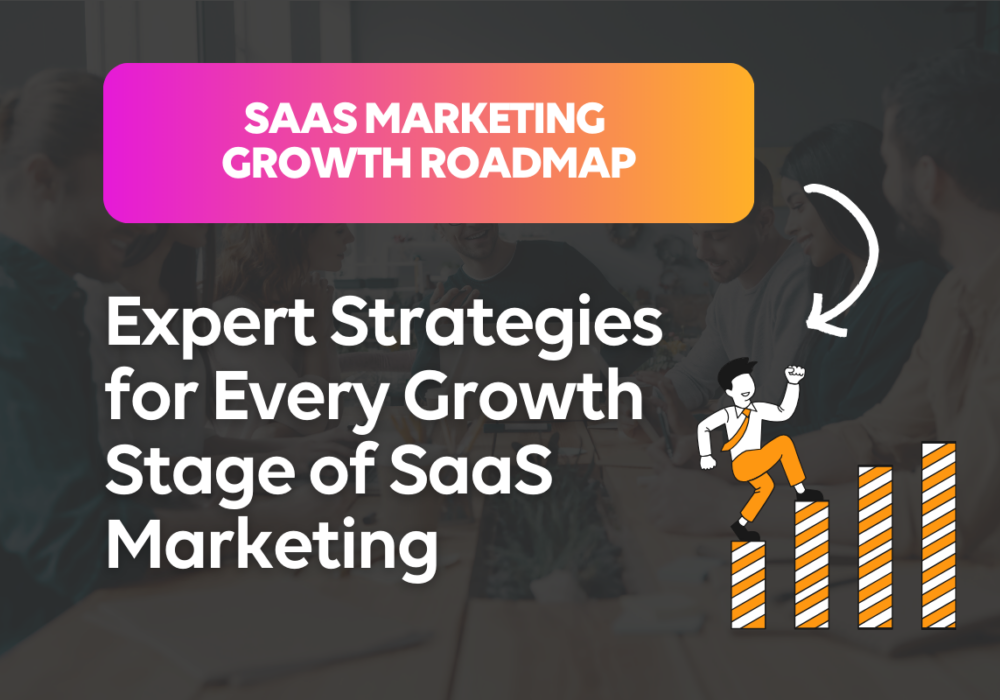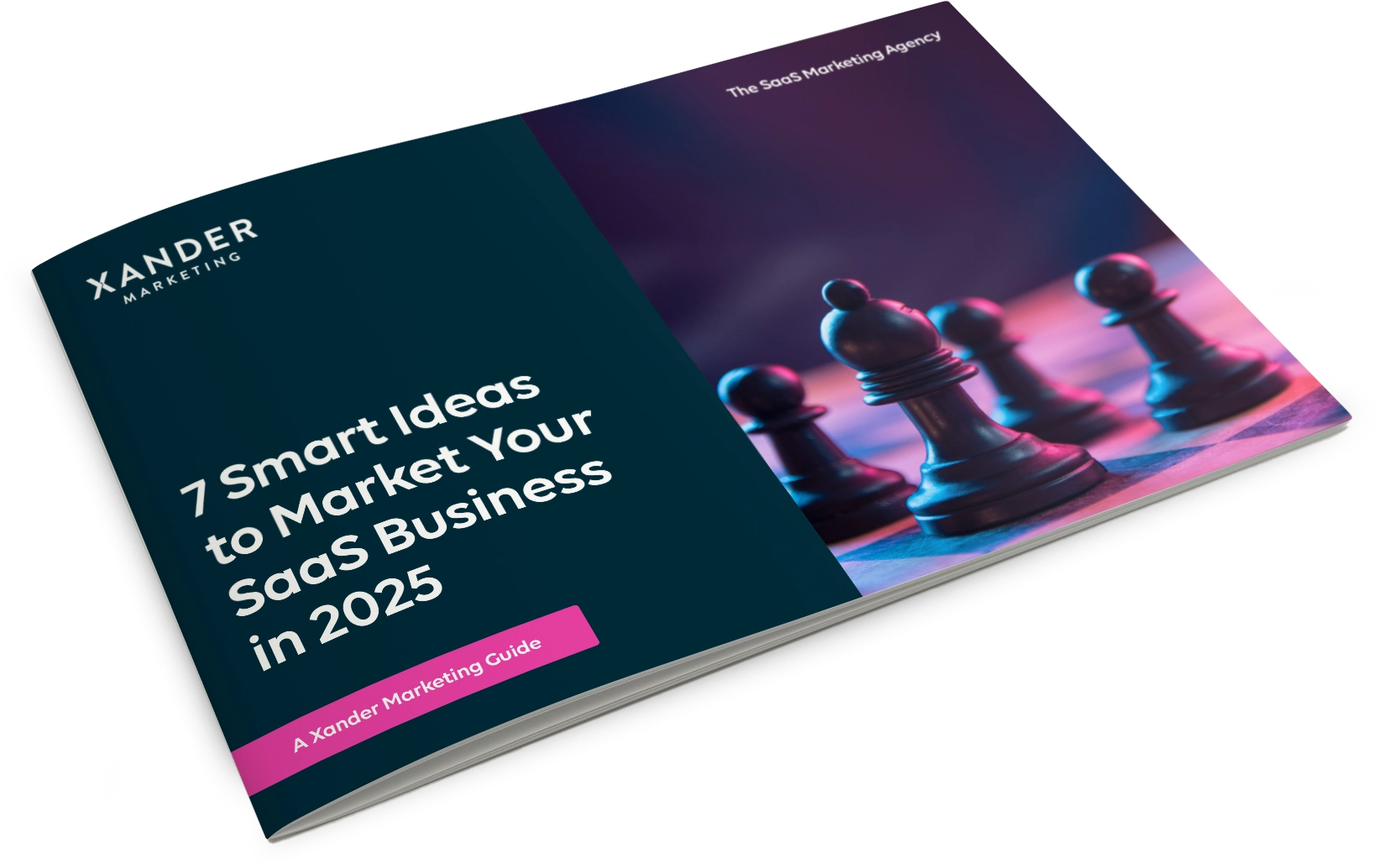How to Market AI features in your SaaS Product
12th April 2023

The artificial intelligence market size was estimated at $119.78 billion in 2022 and is forecasted to reach $1,591 Billion by 2030. It’s clear to see that the integration of artificial intelligence (AI) into SaaS products is only becoming more prevalent.
With the explosion of AI language models such as ChatGPT and the rise of chat as a common way to ask questions, SaaS companies of all sizes are rapidly adding AI features to their products. However, while this may have been a unique selling point three months ago, the increasing ubiquity of AI features makes it more challenging for businesses to make their product stand out.
By understanding the emerging technologies around AI and effectively marketing the AI features of their SaaS products, businesses can still differentiate themselves, making their AI tools stand out in an increasingly busy marketplace. Read on to explore the best practices for marketing AI features in your SaaS product.
The State of AI in SaaS
With the rapid rise of chatbots and the increasing public awareness of powerful AI chat models like OpenAI’s ChatGPT, SaaS companies are rapidly integrating AI engines such as GPT-4 and Stable Diffusion into their products to offer enhanced functionality and improved user experiences.
Big names buying into AI include Microsoft Copilot, Adobe Firefly and Canva Create. With so many successive and newsworthy launches, it’s no surprise that there’s a lot of noise surrounding AI in SaaS. This makes it challenging for businesses to stand out and differentiate themselves from competitors.
In order to stay ahead of the curve, it’s important to remember that AI is still a relatively new technology, and will likely become a more normalised part of business culture over time as it is integrated into everyday processes.
Compare it to the shift from on-premise software to cloud-based SaaS products. While this technology was initially met with excitement, fanfare and debates about the changes such disruptive technology might cause, it eventually became the norm. The same will likely be true for AI in SaaS products.
In the meantime, businesses adding AI tools to their SaaS products should take advantage of the current buzz and make a big deal out of their AI features, but be ready to adapt their messaging as AI becomes more commonplace.
The Importance of Marketing AI Tools
Promoting your product’s AI features while there’s still a lot of noise around AI in general may seem like jumping on the bandwagon, but the key is to consider and communicate how those features provide real value. This will help your product stand out from competitors for all the right reasons, rather than just riding a trend.
Tap into the excitement around AI to generate interest in your product. Consider creating attention-grabbing content on AI, such as blogs, guides and eBooks, and engaging in wider discussions around the use of AI in SaaS. Let your audience know that you are a thought leader in this popular area of the industry, and encourage them to engage with your product.
Done right, this can lead to more sign-ups, more paying customers, and increased revenue overall.
Strategies for Promoting AI Tools
When it comes to promoting your product’s new AI-empowered tools, the big question is how to launch them. One strategy for getting your tools out there is to offer free access or a free trial or free version. This will get a larger number of people into the sales funnel, allowing them to explore your product and its AI capabilities, and maybe sign up for a paid account later down the line.
By providing free access, you’re lowering the barrier to entry and making it easier for people to test out your AI features and talk about them in their own networks. They will be able to see for themselves that you’re not just joining the hype around AI, but providing AI-enabled tools that offer genuine added value.
If you’re considering offering free access, you may want to add a waitlist to build anticipation. This creates a sense of exclusivity by limiting access, leaving potential customers feeling all the more eager to try the new tools for themselves as they read their peers’ reviews.
This is also a handy way to gain leads and gauge their interest in your AI tool, collecting contact information for the waitlist and building a list of strong leads to target with marketing campaigns once the AI tool becomes more widely available.
Alternatively, you can make your AI tools exclusive to paying customers, or add them as an upsell for current customers. This can create a sense of exclusivity and make your product more attractive to potential customers. Users enjoying a free version of your product may be convinced to become paying customers so they can explore your product’s new capabilities.
This approach can generate more short-term revenue and create a higher perceived value for your product, leading to more leads in the longer term.
Best Practice for Marketing AI Features
When it comes to getting the word out about your new AI features, you want to focus on what sets them apart. Highlight benefits such as increased efficiency, improved accuracy, and enhanced user experience, and really illustrate how these benefits will affect customers’ daily business routines for the better.
Make sure you’re targeting the right audience, such as businesses in specific industries or with particular pain points that your new tool can address. This may mean examining reviews or conducting a survey to gain a closer understanding of what your customers’ daily needs are. Consider segmenting your audience to highlight different benefits for different targets.
Leverage all your available marketing channels, such as social media, email marketing, and webinars, to reach potential customers. Consider providing educational resources, such as blog posts or tutorials, to help customers understand how to use the AI features.
Incorporate customer feedback to continuously improve and optimise AI tools, and to adapt your messaging to genuine needs that your tools can answer.
Be prepared to change tactics as AI use grows, changes, and becomes normalised.
Addressing AI Controversy
As with any groundbreaking technology, the upsurge in AI tools hasn’t been without its share of questions and concerns. Potential customers may have reservations about using AI tools due to controversy over training, data protection and copyright. It’s important to build trust by showing due consideration to these concerns while putting your audience’s minds at ease.
There are concerns about the training of AI models and the potential biases that can be introduced into the models. If an AI model is trained on a biased dataset, it may perpetuate that bias in its output. This could have significant implications for areas such as hiring and lending decisions, where decisions need to be made without bias.
Businesses need to show awareness of these potential issues and be transparent in explaining the processes they are putting in place to mitigate potential biases. Businesses also need to be open to feedback from customers on this issue, taking concerns seriously and showing evidence of working toward a better solution.
Another area of controversy surrounding AI is the ownership of copyright. If an AI model is trained on copyrighted material, such as images or text, there are going to be questions about who owns the resulting copyright. This has been seen particularly in the spectrum of visual art and design, where creators are able to recognise their own artworks in AI generated images, and are unable to gain compensation for their use.
It’s important to address this ongoing problem as it develops, staying aware of the latest legal guidelines for AI content, and explaining to customers how you are ensuring that your tools are not infringing on any copyrights. Consider in advance how you will approach ownership of any resulting copyrights, and be transparent about this in your communications.
Promote Your Innovations with Xander Marketing
As AI becomes more and more prevalent in SaaS products, businesses must find innovative ways to promote their AI features effectively, address controversies, and stay ahead of the curve. By implementing best practices, highlighting specific benefits and addressing controversial issues head-on, businesses can differentiate themselves and capture the attention of potential customers.
At Xander Marketing, we specialise in helping SaaS businesses promote their products and stand out in a crowded market. Our team has extensive experience in developing effective marketing strategies for AI-powered SaaS products, from crafting compelling messaging to targeting the right audience and leveraging marketing channels.
Contact us for a free 30 minute consultation to learn how we can help you promote your AI features and grow your business.





